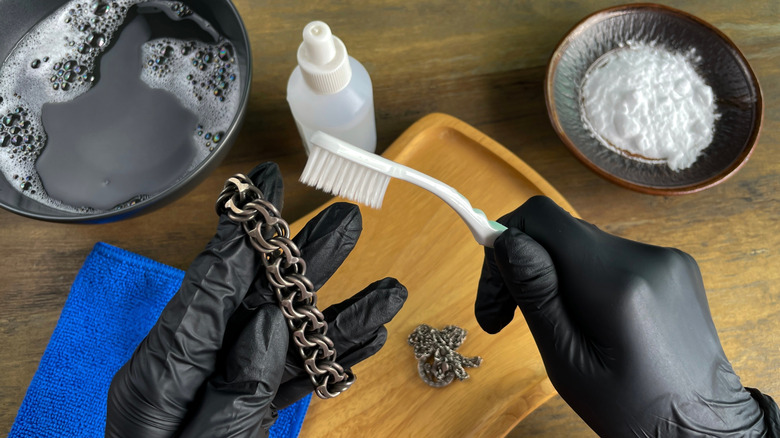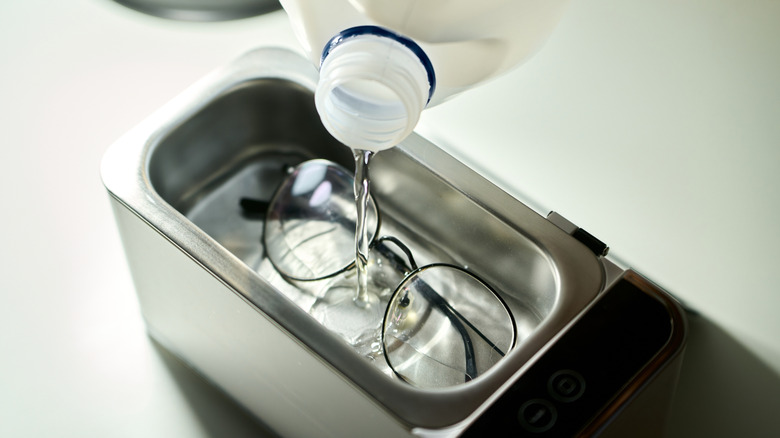The Hands-Free Tool That Makes Cleaning Around Your Home So Much Easier
We may receive a commission on purchases made from links.
It can be satisfying to scrub out dirt and grime from items around the house with old-school home hacks, but frankly, most of the time, we have better things to do. So, when a new toy blips on our radar that's actually worth the investment, we rejoice. There's a nearly magical contraption that will give a smudgy pair of glasses, a dirt-caked garden tool, and heavily tarnished silver equally thorough yet gentle cleaning: an ultrasonic cleaner. Your dirtiest objects may be eligible for an elbow grease-free clean that relies on little more than liquid and bubbles created by sound waves.
Like a high-tech version of these Alka-Seltzer cleaning hacks, ultrasonic cleaners rely on high-frequency sound waves that stir up what's called cavitation bubbles in a water-based cleaning solution. When they burst against dirty surfaces, they loosen grime and wash the dirt away. These devices come in a range of sizes, from 350 milliliters to accommodate things around the size of one pair of glasses, all the way to 30-liter models to clean automotive parts, large tools, and even metal musical instruments.
To use an ultrasonic cleaner, add a cleaning solution — distilled water and mild liquid soap is a popular mixture — up to the internal fill line, and let the machine run for 10 to 15 minutes to degas and warm the solution. Place objects to be cleaned in the basket and immerse them. Run the machine for two to 10 minutes, depending on how dirty the objects are.
What not to clean with an ultrasonic cleaner
A cleaning gadget that will do the work for you sounds good, especially if it's affordable. Yet, ultrasonic cleaners have their limitations. First off, a hefty list of materials is not appropriate for ultrasonic cleaning. Most organic materials are a no-go, including porous or soft gemstones like opals, pearls, emeralds, lapis lazuli, turquoise, malachite, amber, and coral.
Also, keep in mind that the vibrations the machine relies on for cleaning can harm items with loose or delicate parts. Even though many ultrasonic cleaners are marketed for cleaning eyeglasses, some people don't recommend that since the lenses may come loose or any special coatings can be compromised. It's wise to stick with cleaning only the items suggested by the manufacturer of your particular machine or experimenting with things that aren't delicate or too valuable.
And, whatever you want cleaned needs to be able to dry quickly so that the moisture doesn't cause damage. Many ultrasonic cleaners claim to clean watches, showing them among the top candidates for a sonic bubble bath. However, make sure that your watch is truly waterproof before washing it in the machine. And seek out whether the machine can clean watches or just watch bands that are appropriate for ultrasonic cleaning.

